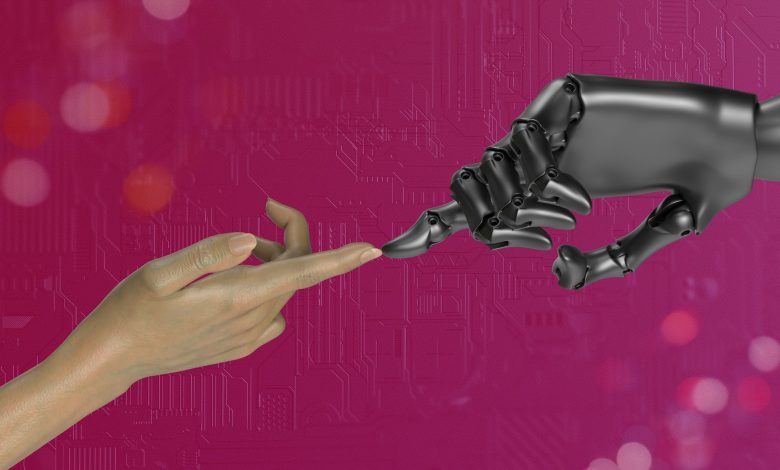
When photography arrived in the nineteenth century, many predicted the demise of painting. That death never came. Instead, painters stopped competing on accuracy and pushed into Impressionism, abstraction, and new ways of seeing. Painting evolved rather than vanished. Photography forced this evolution — art historians have extensively documented how photography’s arrival revolutionized artistic composition, perspective, and the entire creative ecosystem.
New image-making tools don’t kill creativity — they change where human judgment matters most.
How AI creates instant prototypes from ideas
Generative tools have become a silent collaborator that collapses the distance from intent to prototype. Instead of debating hypotheticals on a whiteboard, teams now review tangible options in minutes: three visual routes, two script angles, and a handful of palette ideas that are imperfect but discussable. For imagery, Midjourney is a common choice, and Gemini’s Nano Banana. For video, Google’s Veo 3, accessible via Gemini and the Gemini API, generates short clips with native audio and can animate from a still (image-to-video), which is ideal for testing motion, pacing, and mood before committing to production.
At the macro level, this cycle-time compression is one reason McKinsey estimates generative AI could add $2.6–$4.4 trillion in annual value across industries, with marketing and sales among the biggest beneficiaries.
Why your expertise still matters (and taste still wins)
The brief defines the creative — a principle that now extends to machines. Vague prompts invite vague output; structured prompts that encode brand voice, audience, objective, constraints, format, references, tone, and success criteria consistently produce sharper options. But AI won’t gift you taste or visual literacy. If you don’t know the Swiss school, you won’t ask for a tight grid, asymmetric balance, or a specific grotesque. You’ll write “clean modern poster” and get something generic.
Someone with real production experience will prompt like a director — naming lenses, camera moves, depth of field, and narrative beats. This is democratization with a discipline clause: access to tools is broad, but distinctiveness still flows from human expertise.
What AI still can’t do: vision vs. variations
Today’s models excel at variation, not vision. They remix brilliantly, but they can’t feel a brand’s unspoken tensions, locate the emotional hinge in a subculture, or decide when breaking a rule will land with your audience. Even in research, where models surface non-obvious patterns, human filtering is non-negotiable because relevance, ethics, and cultural resonance are judgment calls.
Even the newest “reasoning” models — trained to think longer before responding — remain assistants, not strategists. More earlier documentation describes this “think before answering” approach, while emerging research cautions that reasoning traces can still mask or even amplify hallucinations in certain settings. So treat them as powerful aides, but not oracles.
Building your AI creative ecosystem
The best creative pipelines already pass the ball between models. One system helps debate and refine ideas, another structures the brief into machine-readable specificity, and specialized models handle visuals or video. The latter now include higher-fidelity short videos with sound from Veo 3 and rapid-generation variants like Veo 3 Fast.
Such choreography consistently yields richer drafts than relying on a single tool, because each model does the part it’s best at while humans arbitrate direction, tone, and taste. Developer updates and news coverage track rapid gains in speed, controllability, and image-to-video fidelity, which make this multi-model handoff increasingly practical in everyday workflows.
Trust by design: NDAs, copyright, and labeling norms
Skepticism about AI is sensible, and most of it clusters around three risks. First, confidentiality: client secrets don’t belong in consumer tools. Regulators such as the UK Information Commissioner’s Office emphasize anonymisation and careful handling of personal data; enterprise playbooks increasingly pair those principles with DLP and access controls. NIST’s AI Risk Management Framework supplies a complementary, risk-based scaffold for governance.
Second, copyright: building on your own IP is safest, and chasing another artist’s signature style raises ethical flags. U.S. guidance is steady that copyright protects expression, not ideas or “style,” and that purely AI-generated works without sufficient human authorship are not registrable.
And last, transparency. Distribution platforms now require labels for realistic, AI-altered media: YouTube’s policy requires creator disclosure for realistic synthetic content, Meta has committed to labeling AI-generated images across Facebook, Instagram, and Threads.
If platforms are labeling AI content, brands should too.
How to lead this shift now
Begin with AI at kickoff, not cleanup. Use with machine-generated moodboards, script stubs, or research summaries to give teams something concrete to react to. Codify “prompt as brief” by turning your best prompts into reusable, versioned templates that include brand voice and success criteria.
Keep a clear human owner for brand fit and cultural nuance, then close the gap between synthetic speed and lived reality by pairing accelerated outputs with on-site footage, community input, and editorial rigor to avoid the generic “AI sheen.” Instrument your workflow for acceleration metrics (time to first viable concept, versions to approval, and quality at review) rather than headcount cuts.
Finally, stay adaptable: reasoning models will keep improving, video models like Veo 3 will keep getting faster and more controllable, and platforms will keep tightening disclosure norms. Photography didn’t kill painting, but freed it to explore. Generative AI plays the same role in marketing today: it materializes ideas faster, expands the palette, and multiplies variations.
And humans still decide which theme resonates, where to add silence, and when to break the pattern.



